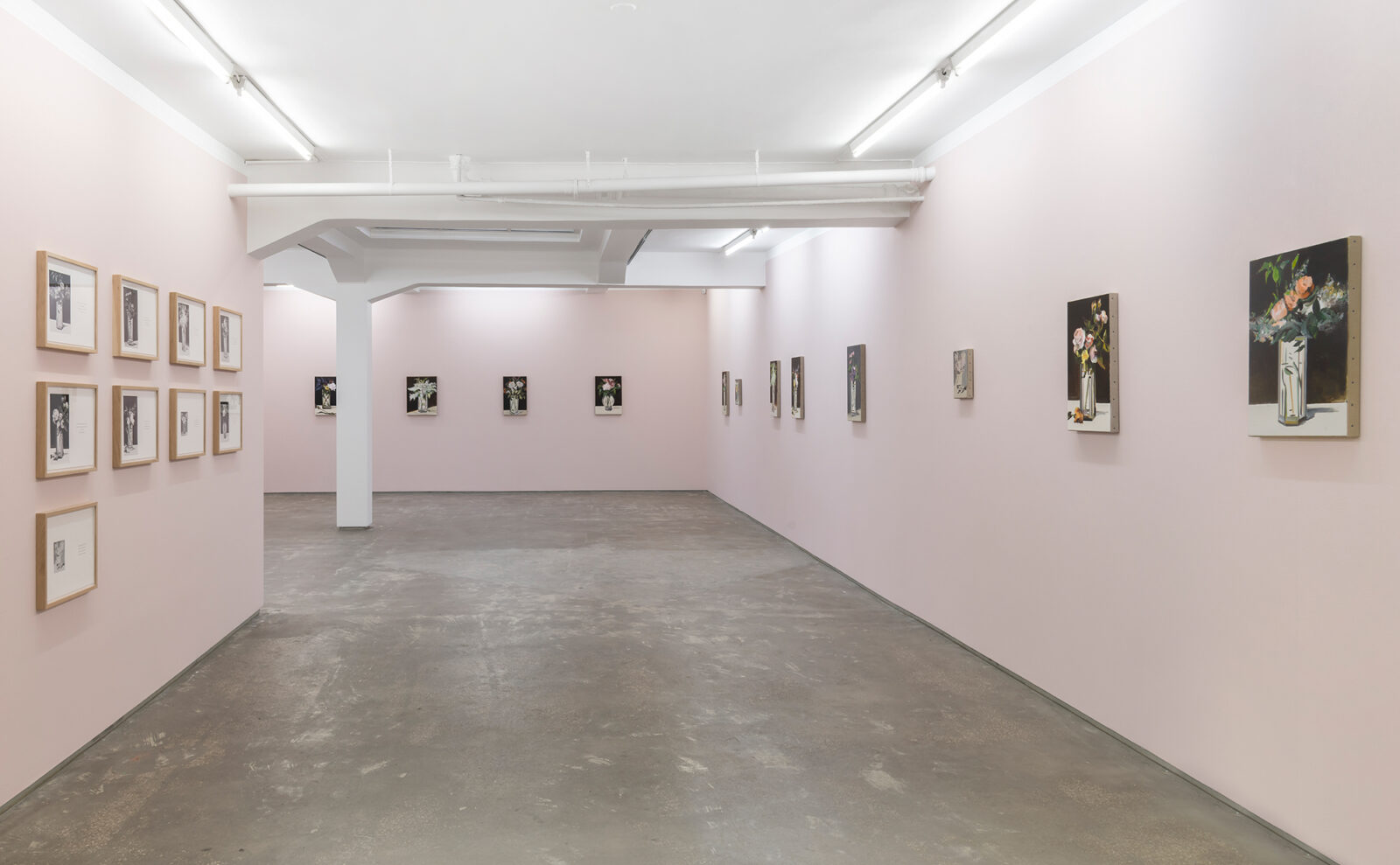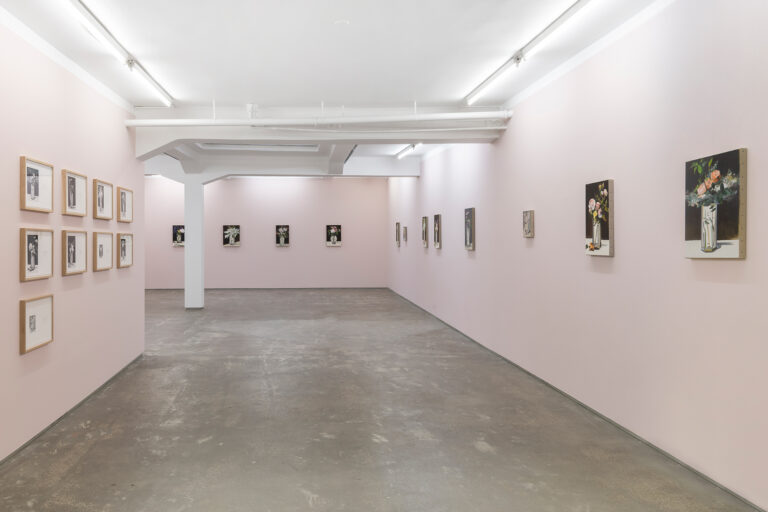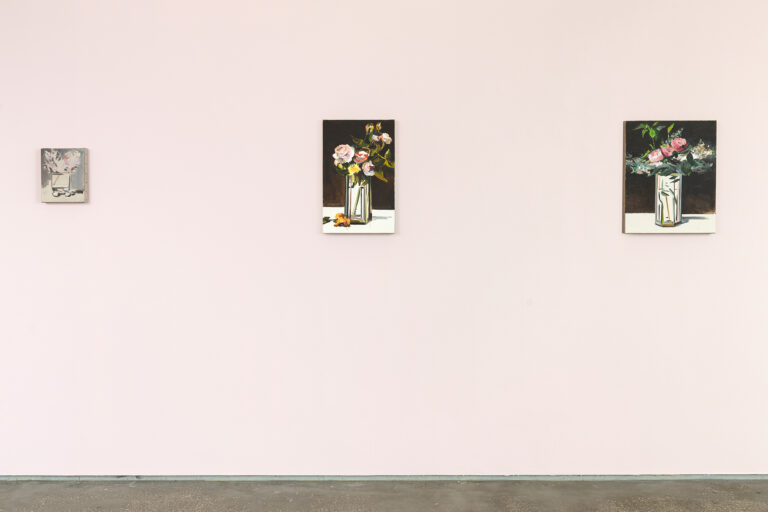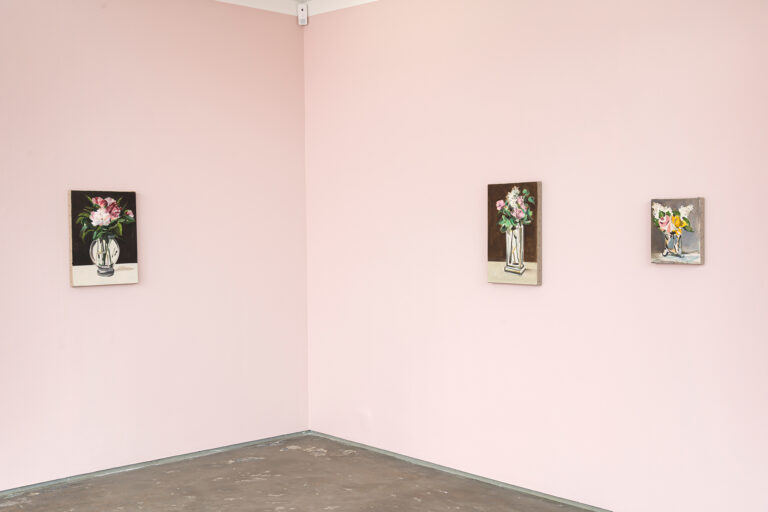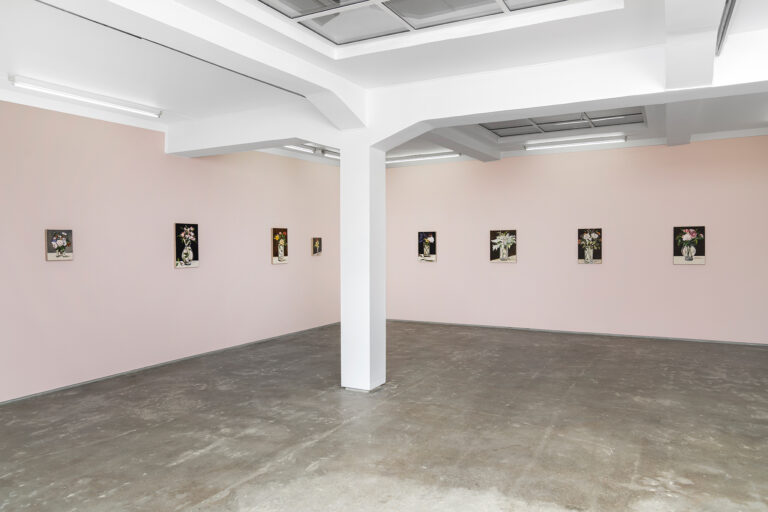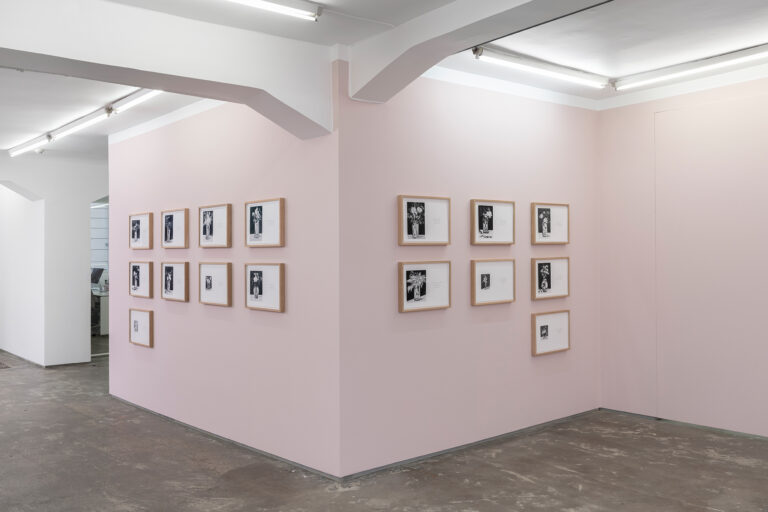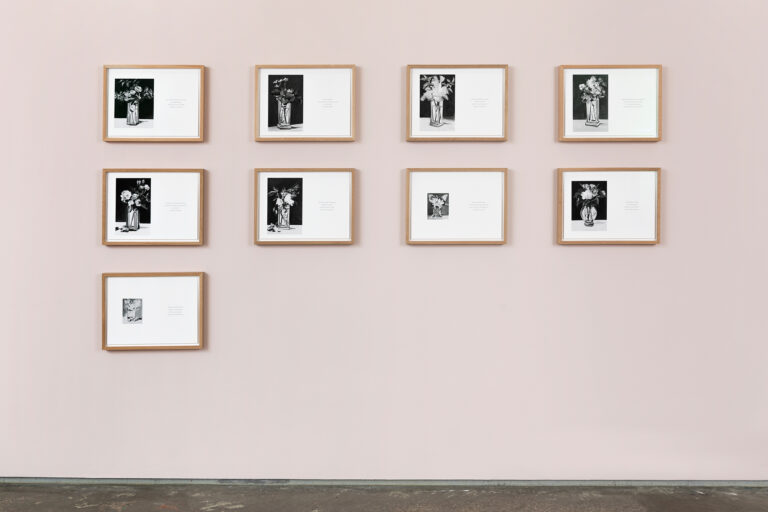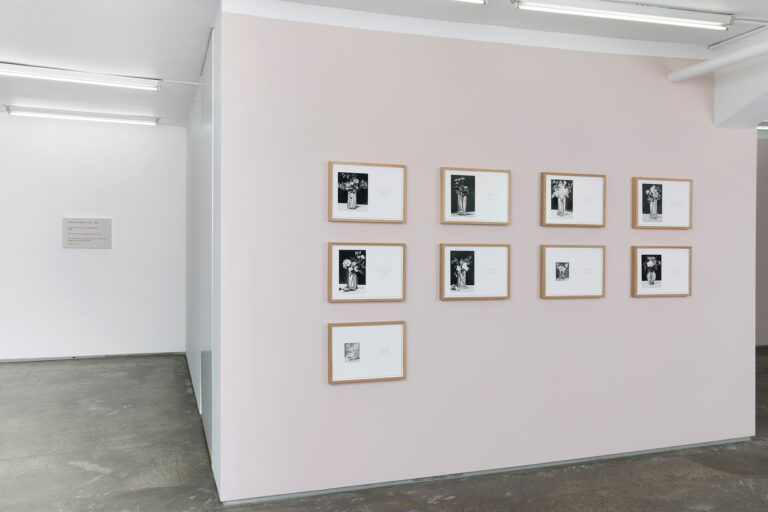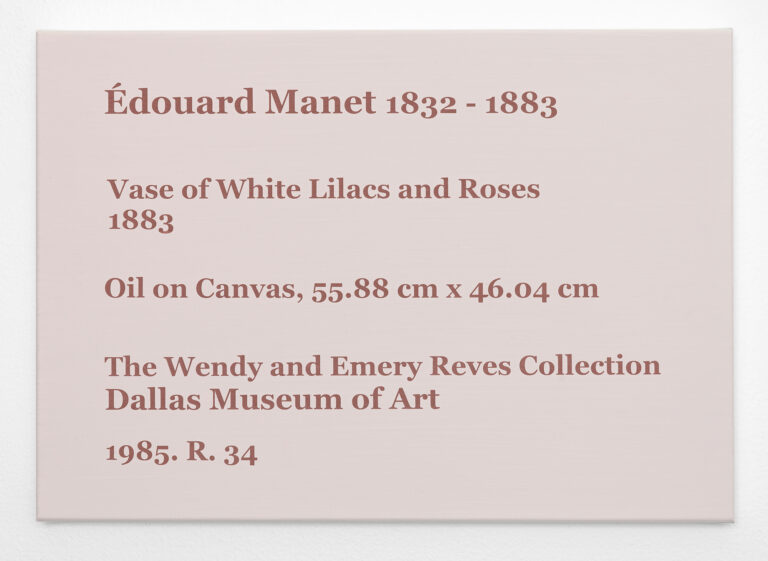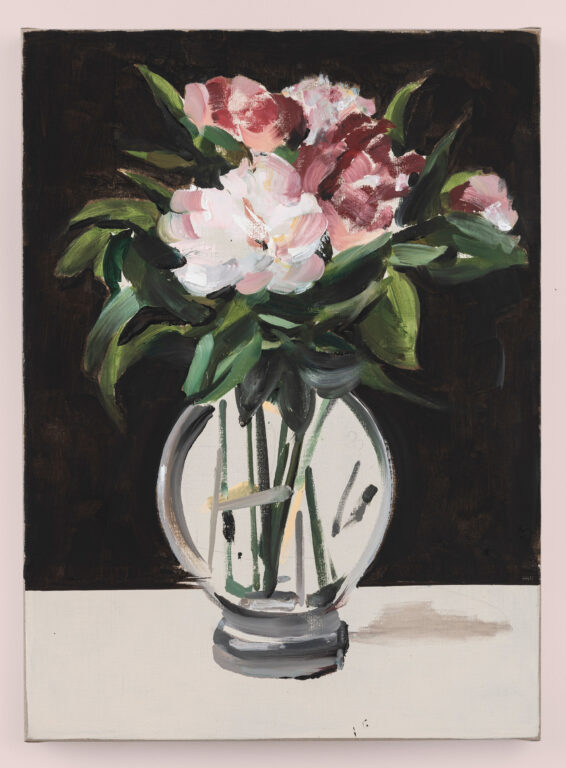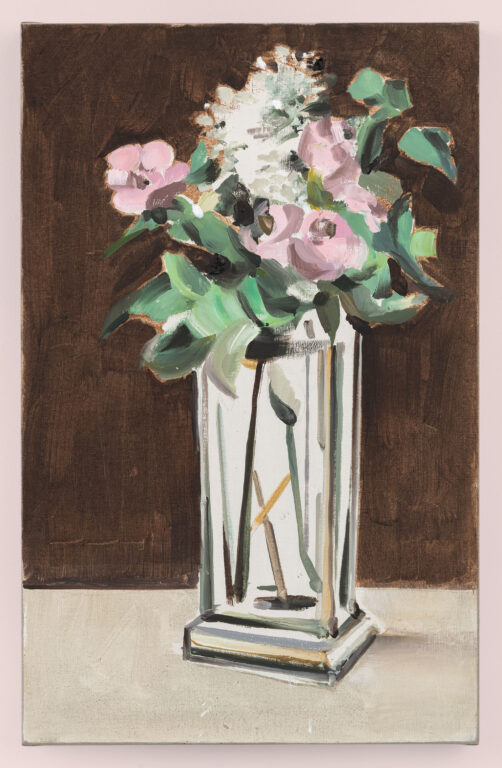OSL contemporary is proud to present a new exhibition by Dag Erik Elgin, opening November 24, 18.00-20.00
Follow the link for more information (in Norwegian) on the filmed conversation OSL series: Dag Erik Elgin & Jan Brockmann
Flowers of Evil
-Text by Bente Larsen
“Viens sur mon coeur, âme cruelle et sourde”
(Baudelaire, “Le Léthé,” Les fleurs du mal, 1861)
Treponema pallidum is the name of a spirochaete (spiral shaped) species of bacteria with its different subgroups that causes the disease syphilis. This is the bacterium that Dag Erik Elgin has bestowed a leading role upon in his recreations of Eduard Manet’s (1832–1883) final works, the sixteen still life paintings of flowers produced during the period between 1881–1883. Due to what was believed to have been the third phase of syphilis, in the last few years of his life, Manet was forced to retire from the bohemian life of the upper classes in Paris to a house in Rueil outside the French capital. The sixteen works Manet painted during this period are amongst the most underrated works of art history. With vivid and sensuous brush strokes the recreation of the petals in all their vitality on the canvas are imbued with a deep sense of beauty. These are artworks that emanate, for Manet, a highly unusual spontaneity and immediacy, an immediacy that was forced on him due to his illness, which only allowed him to work on his canvases a few hours a day and gave rise to a situation in which the raw canvas itself was allowed to play a part. The sixteen still life flower paintings in transparent glass vases are portrayed with the same sensuous use of strokes and colours that characterise his works as a whole, but also with a hint of melancholy amidst the beauty. In these sixteen still lives, Manet has through the interplay of water, glass, and stalks created his own world of impenetrability, a surface that engages in dialogue with a background shrouded in darkness, but also brings it forth through the bouquets and vases. This is where Dag Erik Elgin and the bacterium Treponema pallidum pick up the thread with his sixteen flower pictures that are on display. Treponema pallidum is the evilness in the flowers: it is the bacterium that causes syphilis and which in its third stage creates an infection causing the body’s own immune system to dissolve the body from within. This is what unfolds in Elgin’s sixteen recreations, described in the black and white photography grisaille of these recreations. Each of the sixteen photographs are accompanied by four lines in total. The first two lines contain medical descriptions of what happens when the body is infected by Treponema pallidum, the last two lines are extracts from the poems “Le Léthé” and “L'irrémédiable,” from Charles Baudelaire’s Les fleurs du mal (1861–66). The two types of text are combined to resemble stanzas, with the same number of lines in a stanza that is the dominant form in Baudelaire’s poetry collection.
To incorporate Baudelaire into his recreations, is to incorporate death, the presence of death as a condition of modernity, with Treponema pallidum as a symptom of modern life. Baudelaire begins his poetry collection Les Fleurs du mal in this way, with the poem he—paradoxically and didactically—chose to entitle “Au Lecteur,” (“To the Reader”):
Et, quand nous respirons, la Mort dans nos poumons
Descend, fleuve invisible, avec de sourdes plaintes.
(And with the air we breathe Death flows unseen
Into our lungs, a dull lamenting stream.)
It is not just Manet’s sixteen still life paintings of flowers that are at the heart of Elgin’s recreations. Together with medical terminology, and death, Baudelaire’s poetry collection Les Fleurs du mal plays a central part:
Treponema pallidum may have surface components
that inhibit complement-mediated killing
I will suck nepenthe and hemlock
at the charming tips of your pointed breasts
These four lines combine scientific descriptions of the lethal Treponema pallidum with the poet’s portrayal of flowers as invisible killers, the flowers of nepenthe and hemlock.
In his recreations of Manet’s last works entitled Flowers of Evil, set in the light of Baudelaire’s work and medical sciences, the artist steps in as an interpreter and analyst, as an artistic researcher who through the combination of three different approaches, explores modernity, death, and the artistic process and who represents a fourth agency through his recreations. Carefully stitched to the wooden frames in the manner of the French artists of the 1800s, Elgin lets the raw canvas emerge amongst the flowers and the fallen leaves, or lets the white surface, which he has treated with gesso, displace the water in the vase. Together with the darkness in the background the white baseboard forms a dramatized horizon behind the still life flower arrangement. Manet’s sixteen still life flower paintings have never been exhibited together. By displaying them together in his recreation, Elgin accentuates the drama that is already present in Manet, a drama which is effectively downplayed by using the same colour as the healing and soothing ointment, calamine, believed to alleviate the symptoms of syphilis, as the background colour for the exhibit.
In his installation, Elgin has interwoven the visual recreation of Manet’s last works with the neutral but in the context extremely brutal description of the slow destruction from within due to syphilis, and Baudelaire’s poems about death—through the flowers, flowers as an evil, as a beauty that kills. Dag Erik Elgin puts all these elements in play through his recreations of Manet’s sixteen flower paintings, like the darkness of pain, the bacterial destruction of life and substance becomes an impenetrable material of water, glass, and stalks; works brought to life through an overwhelming sensuousness of colours and brush strokes, but also of pain. The crystal vase that glows white like the surface that has eaten away at the flower stalks and that rests heavily on the white surface that the crystal vase is poised on, a surface that forms a dramatic horizon against the obscure background, which penetrates the delicate texture of the petals and consumes them like the Treponema pallidum devours the body from within. Thus, the flowers become the flowers of evil.
-Translation by Victor Szepessy
Dag Erik Elgin’s work is informed by an ongoing investigation into the history of painting, modernist ideals and contemporary visual culture. Projects like Balance of Painters, Originals and La Collection Moderne introduce text based works and repetitive strategies as catalysts for exploring modernism’s ongoing affair with current cultural and aesthetic representations. He has exhibited at places such as Albertinum, Dresden, Hamburger Bahnhof, Berlin, the National Museum of Art, Architecture and Design, the Henie Onstad Art Center, the Vigeland Museum, OSL contemporary and Kunst-Werke, Berlin. Elgin was awarded the Carnegie Art Award first prize in 2014, and 2010-2016 he was professor at the Academy of Fine Arts Oslo (KHiO).
Bente Larsen is professor in Art History, University of Oslo. Larsen’s research has it focus primarily on modernisme, with focus on Monet, Manet and Hammershøi approached from the basis of continental aesthetics, as it is formulated in Adorno’s aesthetic theory and the post-phenomenlogy of Jean-Luc Nancy.
